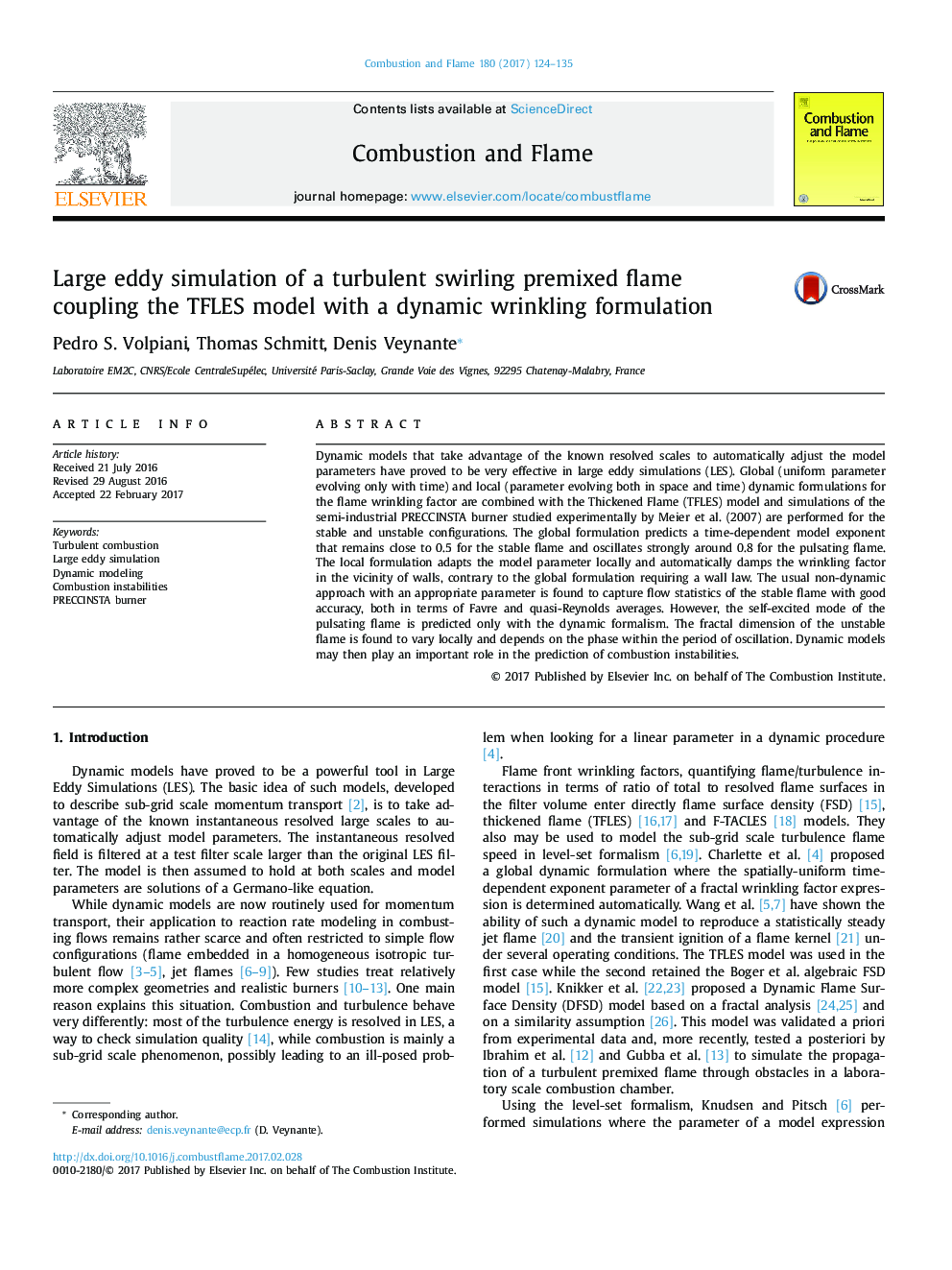| Article ID | Journal | Published Year | Pages | File Type |
|---|---|---|---|---|
| 4764381 | Combustion and Flame | 2017 | 12 Pages |
Abstract
Dynamic models that take advantage of the known resolved scales to automatically adjust the model parameters have proved to be very effective in large eddy simulations (LES). Global (uniform parameter evolving only with time) and local (parameter evolving both in space and time) dynamic formulations for the flame wrinkling factor are combined with the Thickened Flame (TFLES) model and simulations of the semi-industrial PRECCINSTA burner studied experimentally by Meier et al. (2007) are performed for the stable and unstable configurations. The global formulation predicts a time-dependent model exponent that remains close to 0.5 for the stable flame and oscillates strongly around 0.8 for the pulsating flame. The local formulation adapts the model parameter locally and automatically damps the wrinkling factor in the vicinity of walls, contrary to the global formulation requiring a wall law. The usual non-dynamic approach with an appropriate parameter is found to capture flow statistics of the stable flame with good accuracy, both in terms of Favre and quasi-Reynolds averages. However, the self-excited mode of the pulsating flame is predicted only with the dynamic formalism. The fractal dimension of the unstable flame is found to vary locally and depends on the phase within the period of oscillation. Dynamic models may then play an important role in the prediction of combustion instabilities.
Related Topics
Physical Sciences and Engineering
Chemical Engineering
Chemical Engineering (General)
Authors
Pedro S. Volpiani, Thomas Schmitt, Denis Veynante,
